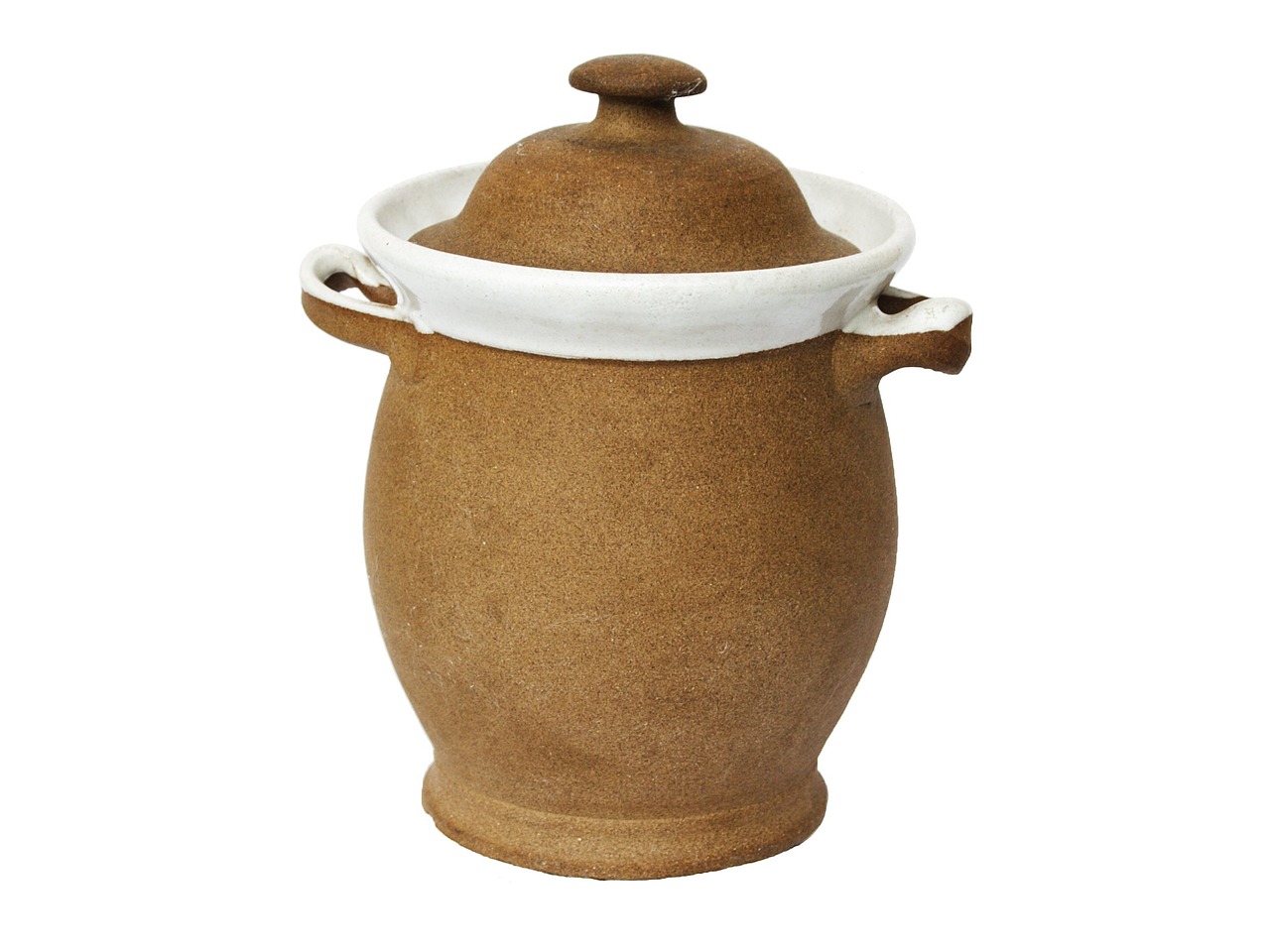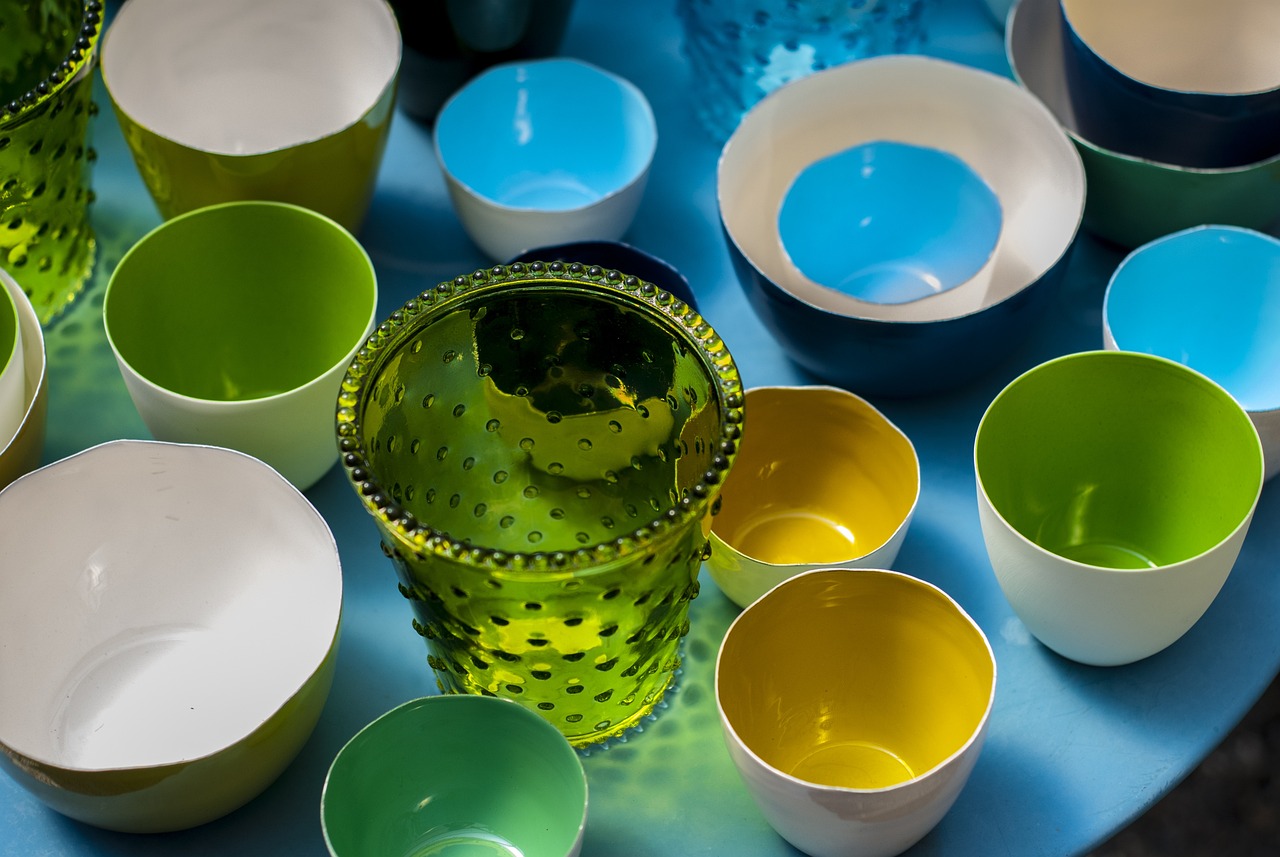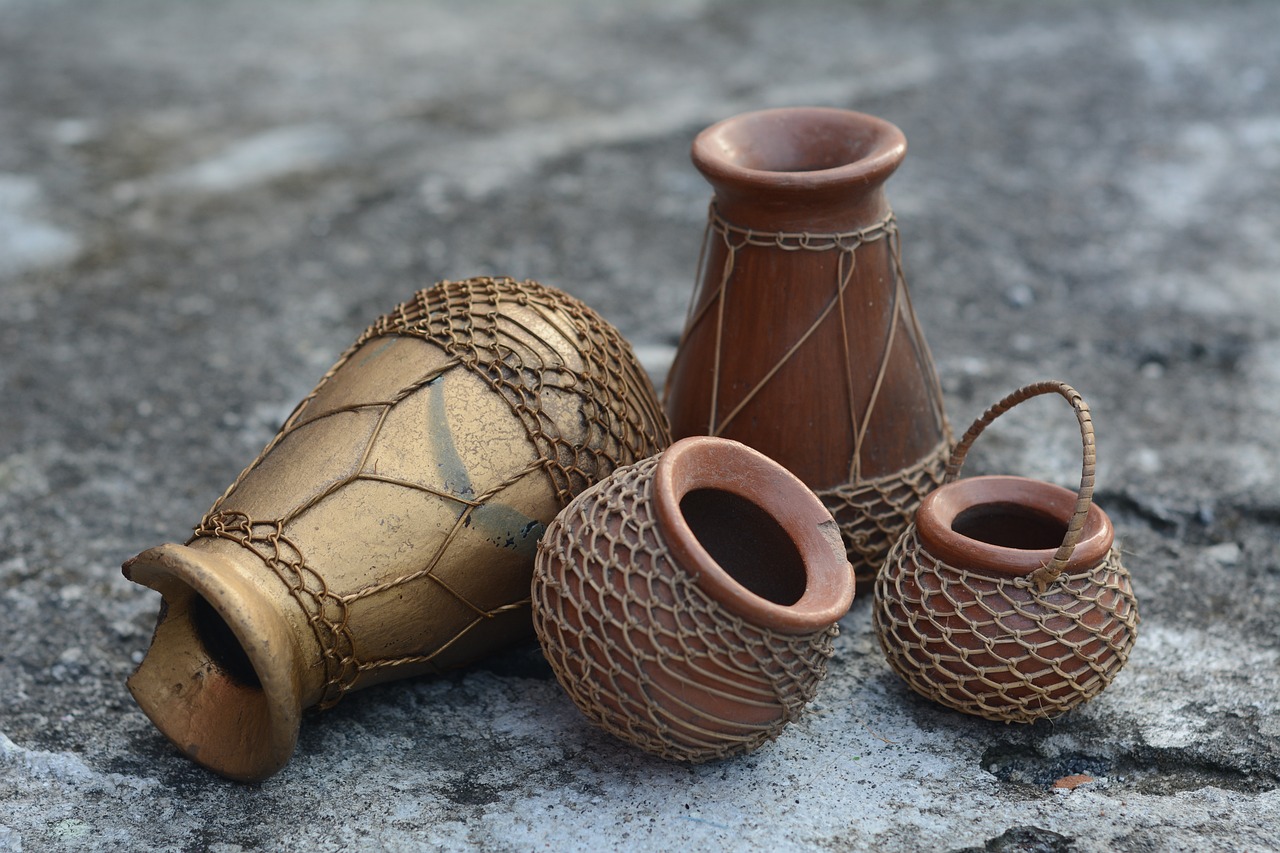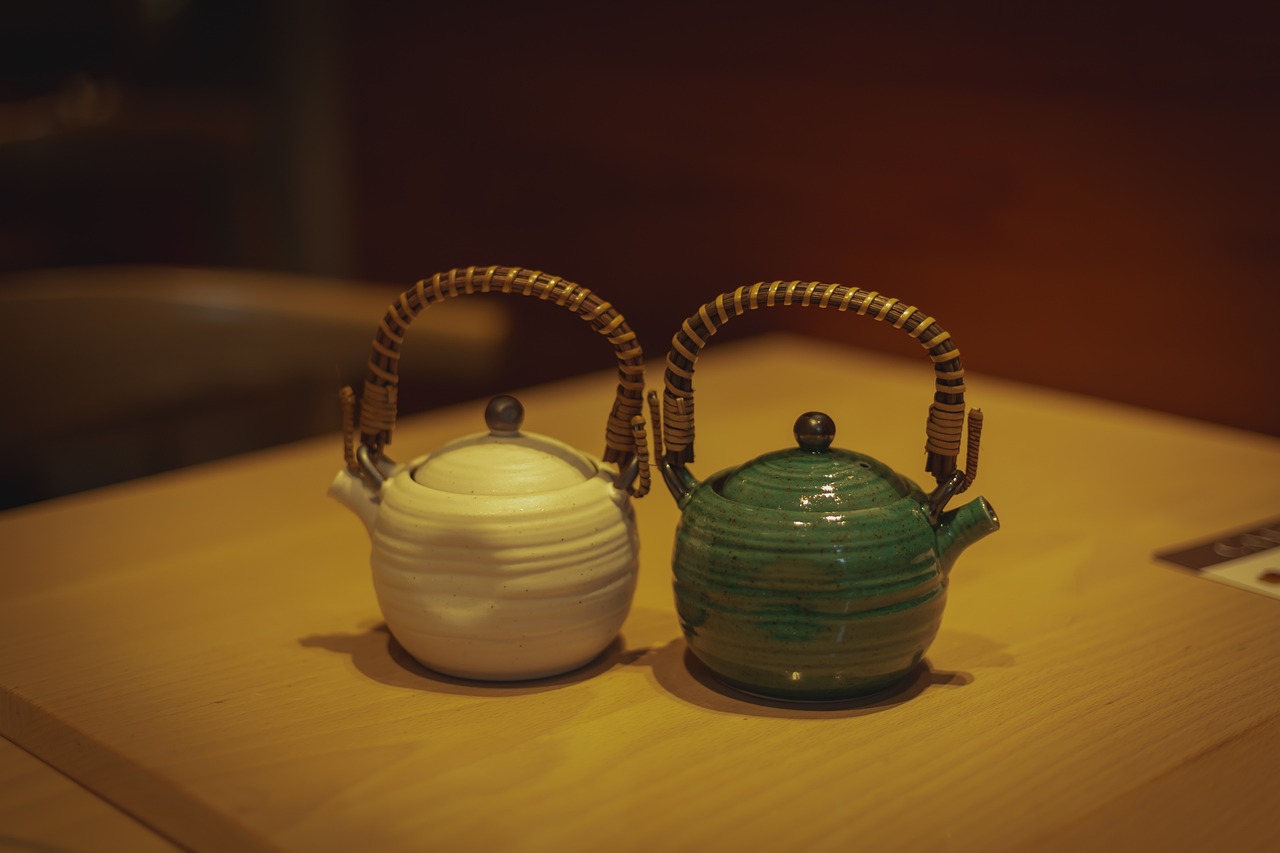The Discovery of Ancient Greek Pottery
When delving into the captivating world of ancient Greek pottery, one cannot help but be mesmerized by the rich tapestry of history and artistry that these artifacts embody. Each piece serves as a window into the past, offering glimpses of a bygone era filled with tales of triumph, tragedy, and everyday life in ancient Greece.
From the humble beginnings of pottery production in the Geometric period to the refined craftsmanship of the Classical era, the evolution of Greek pottery mirrors the cultural and artistic developments of the time. The intricate designs, vibrant colors, and varied shapes of these vessels speak volumes about the creativity and skill of the artisans who crafted them.
One of the most fascinating aspects of ancient Greek pottery is the array of techniques used in its creation. Artisans employed a combination of clay molding, kiln firing, and decorative painting methods such as black-figure and red-figure painting to adorn their vessels with intricate designs and narratives.
Moreover, pottery held a dual significance in ancient Greek society, serving both practical and symbolic purposes. These vessels were not merely utilitarian objects for storage and transportation but also played a crucial role in religious rituals, funerary practices, and social customs.
Themes and motifs depicted on Greek pottery offer a glimpse into the values and beliefs of ancient Greek society. Mythological scenes, depictions of athletic competitions, and everyday activities are recurrent motifs that shed light on the cultural norms and ideals of the time.
Regional variations in pottery styles further highlight the diverse influences that shaped ancient Greek art. Different regions developed unique pottery techniques influenced by local traditions, available resources, and interactions with neighboring civilizations.
Through archaeological excavations, numerous ancient Greek pottery pieces have been unearthed, providing valuable insights into the past. These discoveries not only enrich our understanding of ancient Greek culture but also contribute to the preservation of this invaluable heritage.
The legacy of ancient Greek pottery continues to resonate in the realms of art, culture, and academia. Its influence can be seen in modern ceramics, design aesthetics, and scholarly research, underscoring the enduring impact of these ancient artifacts on contemporary society.
Today, the fascination with collecting and studying ancient Greek pottery persists, driving ongoing research and conservation efforts. Scholars and enthusiasts alike are dedicated to preserving these treasures of the past, ensuring that their beauty and historical significance endure for future generations to appreciate and learn from.

History of Ancient Greek Pottery
The history of ancient Greek pottery is a fascinating journey through time, reflecting the artistic evolution and cultural richness of ancient Greece. Dating back to the Geometric period around 900 BC, Greek pottery underwent significant transformations, both in style and function, over the centuries leading up to the Classical era.
During the Geometric period, Greek pottery was characterized by simple geometric patterns and motifs, often used for practical purposes such as storing liquids or grains. As the Greek city-states flourished and trade expanded, pottery became not only a utilitarian object but also a canvas for artistic expression.
One of the most significant developments in Greek pottery occurred during the Archaic period (700-480 BC), with the introduction of black-figure and red-figure painting techniques. These innovative methods allowed artists to depict intricate scenes and narratives on pottery, bringing mythological stories and everyday life to vibrant visual life.
By the Classical era (480-323 BC), Greek pottery had reached its pinnacle of artistic achievement, with renowned pottery centers like Athens producing exquisite vases, amphorae, and kraters adorned with elaborate designs and intricate details. These masterpieces not only served practical purposes but also held symbolic and cultural significance in ancient Greek society.
Ancient Greek pottery not only served as functional objects but also as a reflection of the values, beliefs, and aesthetic sensibilities of the people who created and used them. From the humble kylix used for drinking wine at symposia to the elaborate lekythos used in funerary rituals, Greek pottery encompassed a wide range of shapes, sizes, and styles that catered to various aspects of daily life and cultural practices.
Through the study of ancient Greek pottery, archaeologists and historians have gained valuable insights into the social, economic, and religious aspects of ancient Greek civilization. The intricate designs, inscriptions, and depictions found on these artifacts provide a window into the past, offering clues about trade networks, artistic trends, and even individual artists' styles.
Today, ancient Greek pottery continues to captivate scholars, art enthusiasts, and collectors around the world, serving as a tangible link to the past and a testament to the enduring legacy of Greek art and culture. By exploring the history of Greek pottery, we not only appreciate the craftsmanship and artistry of ancient artisans but also gain a deeper understanding of the society that produced these remarkable artifacts.

Techniques of Pottery Making
When it comes to the techniques of pottery making in ancient Greece, it's a fascinating journey into the world of skilled artisans and intricate processes. The art of pottery making was highly esteemed in ancient Greek society, with pottery serving both practical and artistic purposes.
Ancient Greek potters primarily used clay as their main material for creating pottery. The clay was carefully selected and prepared to achieve the desired consistency and quality. Different types of clay were used depending on the intended purpose of the pottery, whether it be for everyday use or ceremonial occasions.
One of the key techniques that ancient Greek potters mastered was the use of kilns for firing the pottery. Kilns were essential for transforming the raw clay vessels into durable, functional objects. The firing process required precise control of temperature and duration to ensure the pottery was properly hardened and could withstand daily use.
Decorative techniques also played a significant role in ancient Greek pottery making. Two of the most famous decorative styles were black-figure and red-figure painting. In the black-figure technique, the figures were painted in black on a red background, while the red-figure technique reversed this, with the figures in red against a black background.
Ancient Greek potters were skilled in using various tools to shape and decorate their pottery. Tools such as wheels, molds, and brushes were employed to create intricate designs and patterns on the vessels. The level of detail and artistry displayed in ancient Greek pottery is a testament to the craftsmanship and creativity of the artisans.
Overall, the techniques of pottery making in ancient Greece were a blend of technical skill, artistic vision, and cultural significance. Each piece of pottery was not just a utilitarian object but a work of art that reflected the values and aesthetics of the society in which it was created.

Significance of Pottery in Daily Life
The in ancient Greece cannot be overstated. Pottery served a multitude of practical purposes, being used for storing food and liquids, transporting goods, and even as offerings in religious ceremonies. The versatility of pottery made it an essential part of daily life, with various shapes and sizes tailored to different needs.
Beyond its practical uses, pottery also held significant symbolic value in ancient Greek society. Intricately decorated vessels were often used in religious rituals and funerary practices, symbolizing the connection between the living and the deceased. The intricate designs and motifs painted on pottery reflected the artistic expression of the culture and conveyed stories and beliefs.
Moreover, the economy of ancient Greece was closely tied to pottery production. Pottery workshops were bustling hubs of activity, employing skilled artisans who crafted exquisite pieces for both local consumption and trade with other regions. The trade networks established through pottery exchange played a vital role in the economic prosperity of ancient Greek city-states.
Additionally, pottery was an integral part of social gatherings and feasts in ancient Greece. Elaborately decorated vessels were used during symposia, where guests would engage in philosophical discussions and revelry while sipping wine from intricately designed cups. The artistry of the pottery added to the aesthetic experience of these gatherings, enhancing the overall ambiance.
In essence, pottery was not merely a utilitarian object in ancient Greek daily life but a sacred and artistic medium that permeated every aspect of society. Its significance extended beyond functionality, shaping cultural practices, economic dynamics, and social interactions in profound ways.

Themes and Motifs in Greek Pottery
When delving into the mesmerizing world of ancient Greek pottery, one cannot help but be captivated by the rich tapestry of themes and motifs that adorn these exquisite artifacts. Each piece tells a story, offering a glimpse into the daily life, beliefs, and aspirations of the ancient Greeks. From mythological narratives to scenes of athletic prowess, from depictions of everyday activities to symbolic representations, Greek pottery serves as a visual chronicle of a bygone era.
One of the most prevalent themes found in Greek pottery is the portrayal of mythological tales and deities. These intricate designs not only showcase the artistic prowess of the craftsmen but also highlight the importance of mythology in ancient Greek culture. From the epic battles of gods and heroes to the romantic escapades of nymphs and mortals, these mythological motifs bring the ancient stories to life on clay canvases.
Athletic competitions, particularly the revered Olympic Games, also feature prominently in Greek pottery motifs. The depictions of athletes in action, adorned with laurel wreaths and victors' prizes, serve as a testament to the significance of sports in ancient Greek society. These scenes not only celebrate physical prowess but also embody the ideals of competition, honor, and excellence.
Furthermore, everyday life finds its place on Greek pottery, with scenes depicting banquets, dances, and domestic activities. These vignettes offer a glimpse into the social customs and rituals of the time, showcasing the importance of communal gatherings, feasting, and celebration in ancient Greek society. The intricate details of clothing, hairstyles, and gestures provide valuable insights into the daily lives of the people who lived millennia ago.
Symbolism plays a crucial role in Greek pottery motifs, with certain symbols carrying deep cultural and religious significance. From the use of floral patterns to the representation of animals and mythical creatures, these symbols convey messages of fertility, protection, and divine favor. The careful placement and repetition of these motifs underscore their importance in conveying layered meanings beyond mere decoration.
In essence, the themes and motifs found in Greek pottery serve as windows into a world long past, offering a visual narrative of a vibrant and complex society. Each brushstroke, each line, and each symbol on these ancient artifacts whisper tales of love, war, faith, and tradition, inviting us to unravel the mysteries of the past and discover the enduring beauty of ancient Greek art.

Regional Variations in Pottery Styles
Ancient Greek pottery showcases a rich tapestry of regional variations in styles, each with its unique characteristics and influences. From the bold and geometric designs of the Geometric period to the refined and elegant forms of the Classical era, Greek pottery reflects the diverse cultural landscape of ancient Greece. Different regions, such as Athens, Corinth, and Sparta, developed their distinctive pottery styles, shaped by local traditions, resources, and interactions with neighboring civilizations.
For example, the Athenian pottery is renowned for its intricate red-figure and black-figure painting techniques, depicting scenes from mythology, daily life, and rituals. In contrast, Corinthian pottery often features floral motifs and animal designs, reflecting the region's connection to trade and maritime activities. The Spartan pottery, known for its simplicity and functionality, emphasizes practicality over ornate decoration, mirroring the austere lifestyle of the city-state.
These regional variations not only highlight the artistic diversity of ancient Greek pottery but also provide valuable insights into the social, economic, and cultural dynamics of different city-states. By studying the unique styles and techniques of pottery from various regions, archaeologists and historians can piece together the intricate mosaic of ancient Greek society, unraveling the interconnected threads of art, trade, and identity woven into each ceramic vessel.

Preservation and Archaeological Discoveries
Preservation and Archaeological Discoveries in the realm of ancient Greek pottery hold a vital key to unlocking the mysteries of the past. Through meticulous excavation efforts and careful preservation techniques, archaeologists have unearthed a treasure trove of pottery fragments and intact vessels that offer invaluable insights into the daily lives, beliefs, and artistic expressions of the ancient Greeks.
Archaeological discoveries have revealed a diverse array of pottery styles, ranging from the geometric patterns of the early periods to the intricate figural scenes of the classical era. These artifacts serve as time capsules, preserving not only the craftsmanship of ancient artisans but also the stories and traditions of a bygone civilization.
One of the most remarkable aspects of ancient Greek pottery preservation is the durability of the materials used. The clay vessels, when fired in kilns at high temperatures, acquire a lasting quality that allows them to withstand the test of time. This resilience has enabled archaeologists to recover intact pieces that provide invaluable clues about ancient Greek society.
Moreover, the meticulous cataloging and analysis of pottery fragments found at archaeological sites have enabled researchers to reconstruct ancient trade routes, social hierarchies, and religious practices. By studying the shapes, decorations, and inscriptions on these vessels, experts can piece together a comprehensive picture of life in ancient Greece.
Through the lens of preservation and archaeological discoveries, we gain a deeper appreciation for the artistry and cultural significance of ancient Greek pottery. Each shard unearthed is a piece of a larger puzzle, shedding light on the rich tapestry of history woven by the hands of ancient artisans.

Legacy of Ancient Greek Pottery
Ancient Greek pottery holds a profound legacy that transcends time, leaving an indelible mark on art, culture, and academia. The intricate designs, masterful craftsmanship, and rich storytelling depicted on these vessels continue to captivate and inspire generations of artists and scholars alike. The legacy of ancient Greek pottery extends far beyond its utilitarian function, serving as a window into the past and a testament to the creativity and ingenuity of the ancient Greeks.
Through the study of Greek pottery, art historians and archaeologists gain valuable insights into the aesthetics, beliefs, and social structures of ancient Greek society. The enduring popularity of Greek pottery in museums and galleries worldwide underscores its significance as a cultural treasure that transcends borders and time periods. The influence of ancient Greek pottery can be seen in modern ceramics, design principles, and artistic movements, showcasing the enduring impact of these ancient artifacts on contemporary art and culture.
Furthermore, the legacy of ancient Greek pottery serves as a bridge between the past and the present, connecting us to the artistic achievements and cultural heritage of a bygone era. The timeless beauty and historical significance of Greek pottery continue to spark curiosity and fascination, driving ongoing research, conservation efforts, and educational initiatives aimed at preserving and promoting these invaluable artifacts for future generations to appreciate and learn from.

Collecting and Studying Greek Pottery Today
Collecting and studying ancient Greek pottery today is a passion shared by many enthusiasts and scholars alike. The allure of these ancient artifacts lies not only in their artistic beauty but also in the stories they hold within their delicate forms. Museums around the world house impressive collections of Greek pottery, allowing visitors to marvel at the craftsmanship of these ancient artisans.
For collectors, acquiring a piece of ancient Greek pottery is like owning a piece of history. Each vessel carries with it a sense of mystery and intrigue, sparking curiosity about its origins and the hands that shaped it centuries ago. The intricate designs and motifs painted on these vessels serve as windows into the past, offering glimpses of ancient Greek life and culture.
Studying Greek pottery today involves a multidisciplinary approach, combining art history, archaeology, and scientific analysis. Scholars examine the stylistic elements, iconography, and inscriptions on the pottery to decipher their meanings and contextualize them within the broader cultural landscape of ancient Greece.
Conservation efforts play a crucial role in preserving these fragile artifacts for future generations. Specialized techniques are employed to protect the pottery from deterioration and damage, ensuring that their beauty and historical significance endure for years to come. Through meticulous care and research, experts continue to unravel the mysteries hidden within these ancient vessels.
Whether displayed in a museum, studied in a university laboratory, or cherished in a private collection, ancient Greek pottery continues to captivate the imagination and inspire awe. The legacy of these remarkable artifacts lives on, offering a glimpse into the rich tapestry of ancient Greek civilization and the enduring power of artistic expression.
Frequently Asked Questions
- What is the historical significance of ancient Greek pottery?
Ancient Greek pottery holds immense historical significance as it provides valuable insights into the culture, society, and artistic achievements of ancient Greece. These artifacts not only showcase the evolution of artistic styles but also offer a glimpse into daily life, beliefs, and traditions of the ancient Greek civilization.
- What are the main techniques used in creating ancient Greek pottery?
Ancient Greek pottery was crafted using various techniques such as wheel-throwing, clay shaping, firing in kilns, and decorating with intricate designs like black-figure and red-figure painting. These methods required skill, precision, and creativity, resulting in the exquisite and durable pottery pieces that have stood the test of time.
- Why is the study and preservation of ancient Greek pottery important?
The study and preservation of ancient Greek pottery are crucial for understanding the cultural, artistic, and historical legacy of the ancient Greek civilization. By analyzing these artifacts, researchers can unravel stories, symbols, and beliefs of the past, enriching our knowledge of ancient societies and their contributions to art and craftsmanship.
- How can one differentiate between the various styles of ancient Greek pottery?
Ancient Greek pottery styles can be distinguished based on their shapes, designs, and painting techniques. For example, the black-figure style features black figures on a red background, while the red-figure style reverses this color scheme. Additionally, regional variations and time periods also play a role in identifying and categorizing different styles of ancient Greek pottery.
- What role did pottery play in ancient Greek daily life?
Pottery in ancient Greece served both practical and symbolic purposes, being used for storage, cooking, serving, and as offerings in religious rituals. Additionally, elaborate pottery pieces were crafted for special occasions and ceremonies, showcasing the artistic prowess and cultural significance attached to these objects in the daily lives of ancient Greeks.



















